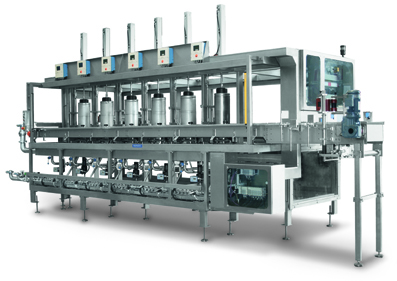The primary functions of belt lubricants are to reduce the friction between the packaging containers and the conveyer belt as well as to sufficiently reduce the impact pressure on the containers accumulated along the conveyer belt. The dry belt lubricant system introduced below features numerous advantages.
Boon Rawd is once again on the crest of a wave. This Thai brewery group, drawing inspiration from its corporate traditions, is now back on level pegging with its competitors. After having been the undisputed market leader in this country’s beer market for about 65 years, enjoying something of a monopoly, Boon Rawd had lost substantial market shares to its competitors over the past ten years. But luckily, times change. With single-minded purposefulness, the group has invested in its chosen market and new state-of-the-art technology, thus catching up with what is meanwhile the second large brewery group in Thailand. In that same period, Boon Rawd managed to increase its output by far more than half in an expanding market.
On July 6, 2007, Hacklberg Brewery of Passau/Germany officially commissioned the new
The Romanian Bere Mures brewery, part of the Heineken Group, commissioned its first canning line in the context of extensive modernisation projects. The complete plant was designed and installed by Vipoll, specialists from Slovenia.
The generation of export sales of over 20 000 hl annually among German breweries, including which countries are buying German beer exports, is
Comac R&D department has developed a new technology for keg linear filling that outdoes the traditional machines and combines the advantages of both rotary and in line systems. The new model is called HS6T and has a nominal output of 250 kegs/hour: three different stations for pre-washing, washing and filling, each one equipped with six heads carrying out the same treatment on six kegs at the same time, fed by a special keg introduction-ejection system.
At the Kulmbacher Brauerei AG, the new KHS filling and packaging line fills the wide variety of beer that is the brewery’s brand spectrum in both 0.33 l and 0.5 l glass bottles.
Novozymes’ latest offering, Ultraflo Max, challenges traditional filtration enzymes and provides a unique solution to tackle filtration problems experienced by brewers. Lautering, or mash filtration, and beer filtration are two distinctive steps in the brewing process. Both of these filtration procedures are influenced by the chemical composition of the wort, or the beer, and therefore depend on the quality of the raw material. As inconsistencies in either filtration step can cause a significant increase in production costs, the scientific background of filtration problems has been of importance to brewers for a long time.
As a mid-sized family business with an emphasis on tradition, the apple wine producer Possmann GmbH & Co. KG in Frankfurt expects to maintain its competitiveness through the utilization of modern state-of-the-art technology. Rapid amortization of its investments is essential. The different types of returnable bottles on the market today require a high degree of flexibility. Syscona Kontrollsysteme GmbH, located in Freudenberg, Germany was able to offer the best price to performance ratio with its newly developed empty bottle inspection equipment.
Heating a beverage prior to bottling is referred to as flash pasteurization. The construction and mode of operation of a flash pasteurizer for heat treating beverages is briefly discussed in the following article, including the arrangement of the plate and frame heat exchangers. The changes in pressure brought about by raising and lowering the product temperature are also addressed. The necessity and cost for the inclusion of a buffer tank for use in conjunction with a flash pasteurizer is also discussed.
Since its foundation in 1864, the Sarajevo Brewery has always put emphasis on



